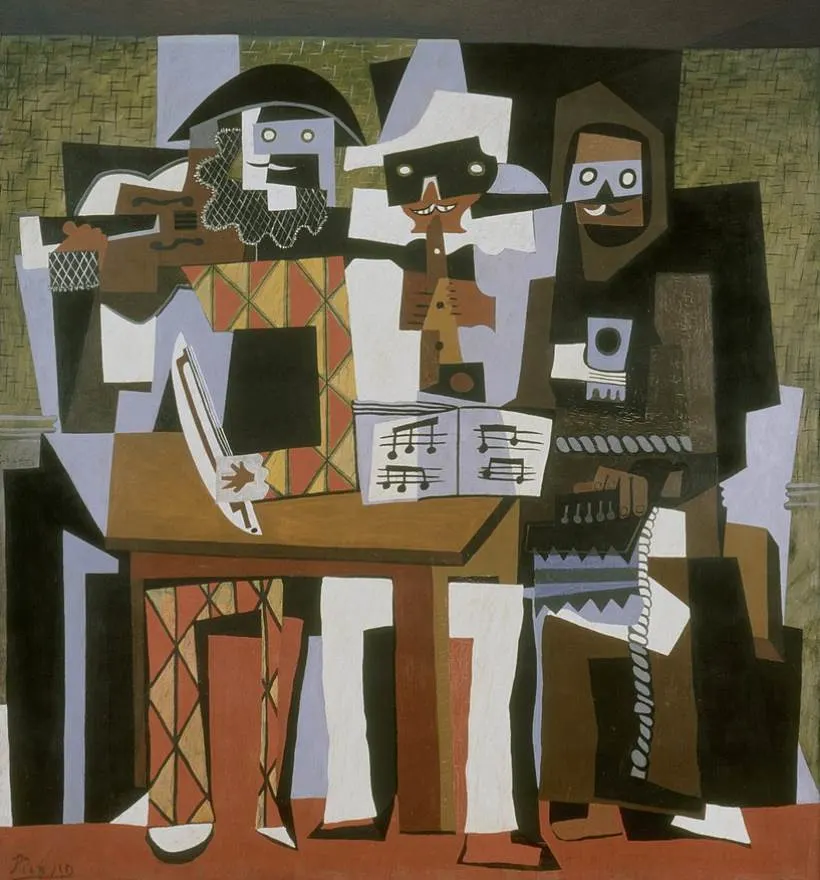The largest and most popular museum in Philadelphia, Pennsylvania, holds an amazing collection of over 240,000 objects.
The Philadelphia Museum of Art was founded in 1876 for the Centennial Exposition in 1876. This was the first World Fair to be held in the United States and commemorated the 100th anniversary of the signing of the Declaration of Independence.
The art gallery set up for this event was originally housed in Memorial Hall, an amazing Beaux-Arts building that is the only structure that was constructed for the World Fair to survive.
The main building in which the museum is housed today was completed in 1928. Other sections of the museum include the Rodin Museum which is dedicated to sculptures by French artist Auguste Rodin (1840-1917), and the Ruth and Raymond G. Perelman Building which is used for special exhibitions.
In this article, you’ll discover some of the most famous paintings at the Philadelphia Museum of Art, artworks that you simply have to see when you take a visit.
1. Saint Francis of Assisi Receiving the Stigmata – Jan van Eyck
- Date created: 1430-1432
- Dimensions: 12.7 × 14.6 centimeters (5 × 5.7 inches)
Saint Francis of Assisi Receiving the Stigmata is the name of two paintings that have been attributed to Jan van Eyck (1390-1441), the Early Netherlandish master and one of the most famous Flemish artists in history. The paintings aren’t signed and dated so it’s unclear when exactly they were completed.
We are great fans of the oeuvre of van Eyck because of the extreme levels of detail he integrated into his work. This Renaissance master revolutionized oil painting and this is reflected in both monumental works of art such as the Ghent Altarpiece and delicate little works such as this one.

2. The Large Bathers – Paul Cézanne
- Date created: 1898-1905
- Dimensions: 210.5 × 250.8 centimeters (82.87 × 98.25 inches)
The Large Bathers or “Les Grandes Baigneuses” is also sometimes referred to as simply “The Bathers” and is one of a series of paintings by Paul Cézanne featuring a similar subject. It depicts a group of women who are bathing in a pond with a town in the background.
The painting at the Philadelphia Museum of Art is the largest in this series. It’s considered to be one of Paul Cézanne’s best works and a masterpiece of modern art. The other painting in the series can be found in museums all across the world, including the National Gallery in London, the Art Institute of Chicago, and the MET in New York City.
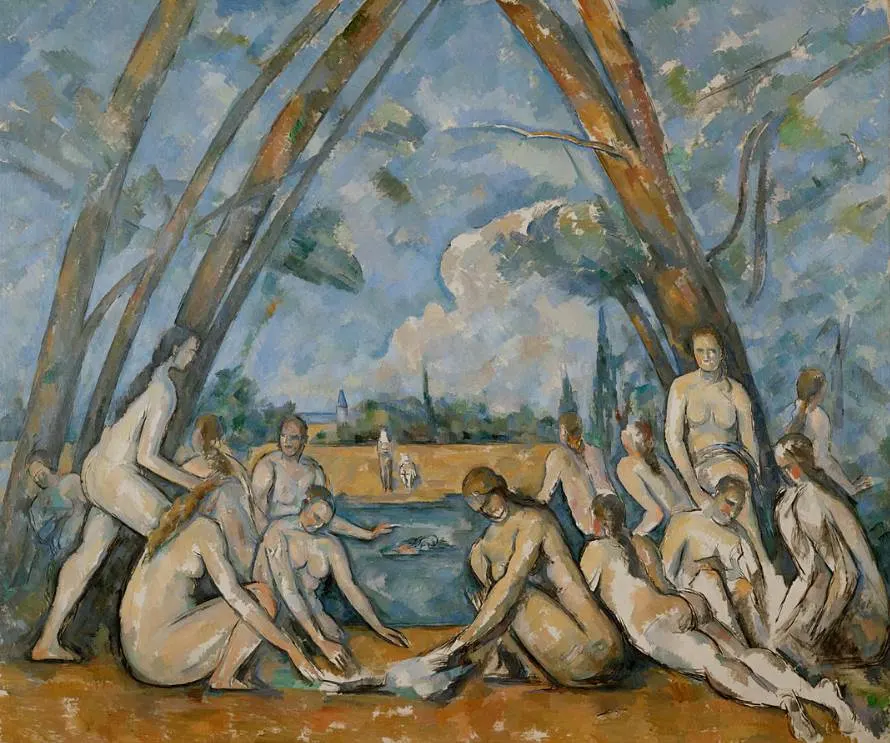
3. Benjamin Franklin Drawing Electricity from the Sky – Benjamin West
- Date created: 1816
- Dimensions: 34 × 25.6 centimeters (13.37 x 10.06 inches)

Benjamin Franklin Drawing Electricity from the Sky is a remarkable work of art by American artist Benjamin West. It depicts an experiment that was conducted in Philadelphia in 1752 by Benjamin Franklin. He wanted to prove that lightning in the sky is, in fact, electricity.
Benjamin West was born in Pennsylvania but eventually settled in London. He was the co-founder of the Royal Academy of Arts and was the institution’s second president. He was a friend of Benjamin Franklin and both were Pennsylvanians who met each other in London.
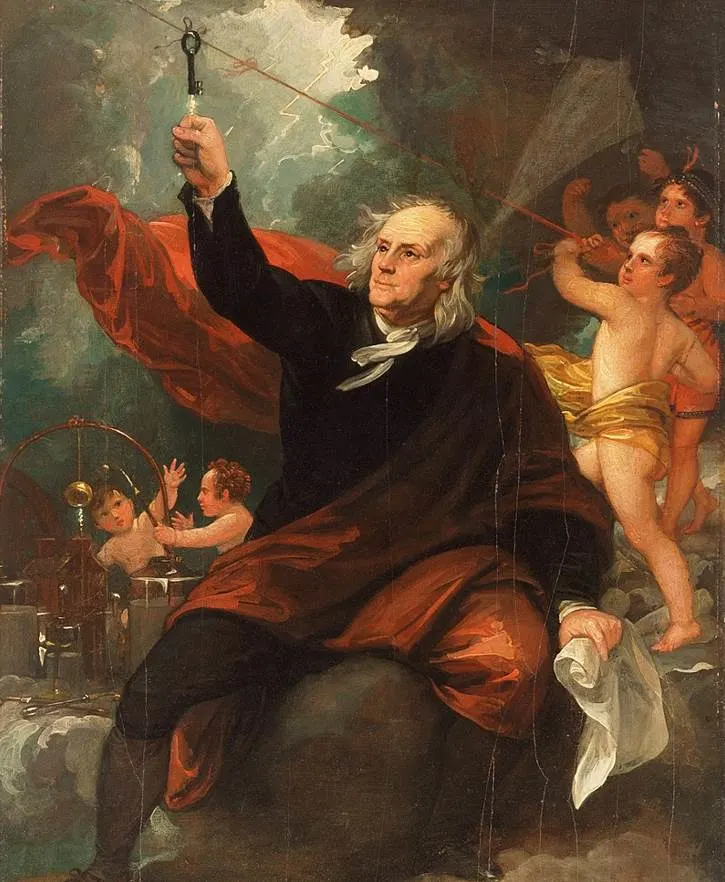
4. The Burning of the Houses of Lords and Commons – J.M.W. Turner
- Date created: 1834-1835
- Dimensions: 92.1 x 123.2 centimeters (36.3 x 48.5 inches)
The Burning of the Houses of Lords and Commons is the name of two paintings by J.M.W. Turner that depict the same event. A fire broke out at the Houses of Parliament in 1834 and destroyed the building. The medieval palace was eventually replaced with the current Palace of Westminster.
The English painter and leading artist of the Romantic era in Great Britain witnessed this event from the opposite bank of the River Thames where he lived. Joseph Mallord William Turner (1775-1851) made several sketches and produced two unique paintings shortly after the event.

5. Sunflowers – Vincent van Gogh
- Date created: 1889
- Dimensions: 91 x 72 centimeters (35.8 x 28.3 inches)
The Sunflower series of paintings by Vincent van Gogh are some of the best-recognized works in the oeuvre of the Dutch artist. He produced several versions in both Paris and Arles and reproduced several ones as well at a later date. His goal with the paintings in Arles was to decorate the Yellow House where he was living to welcome Paul Gauguin.
The painting at the Philadelphia Museum of Art is a replica of the third version. The original can be found at the Neue Pinakothek in Munich, Germany. All of the paintings are slightly different with different color schemes but extremely colorful nonetheless.
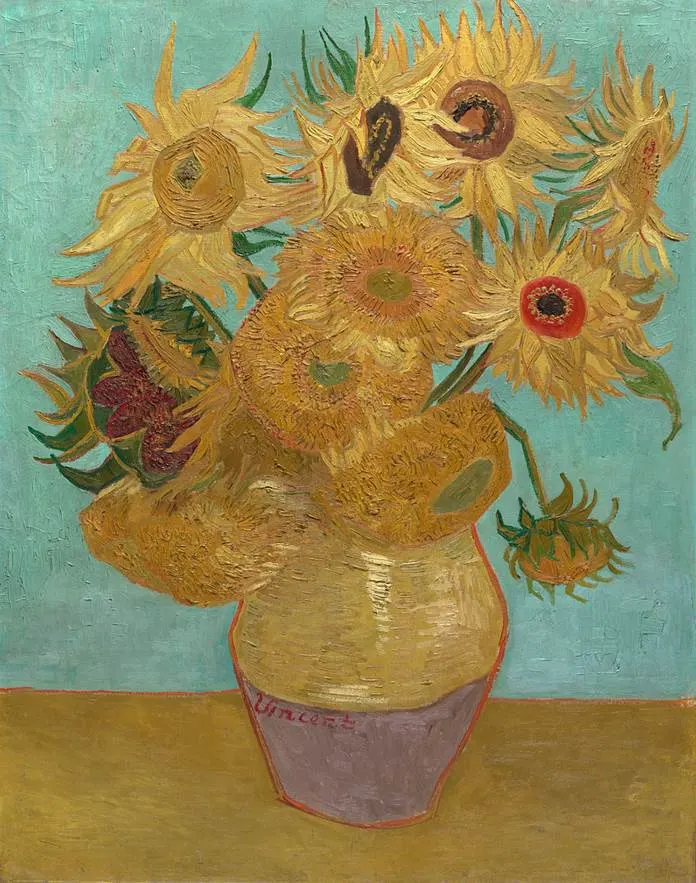
6. The Gross Clinic – Thomas Eakins
- Date created: 1875
- Dimensions: 240 × 200 centimeters (8 × 6.5 feet)
The Gross Clinic is one of the ultimate masterpieces by Realism artist Thomas Eakins (1844-1916), a man considered to be one of the greatest American artists in history. It was completed in 1875 and the main figure is Dr. Samuel D. Gross, a 70-year-old professor.
We can see the professor conducting a class at Jefferson Medical College. We can see the students performing surgery in a 19th-century surgery theater. It commemorates surgery in general, a medical procedure that was still in its infancy at the time.
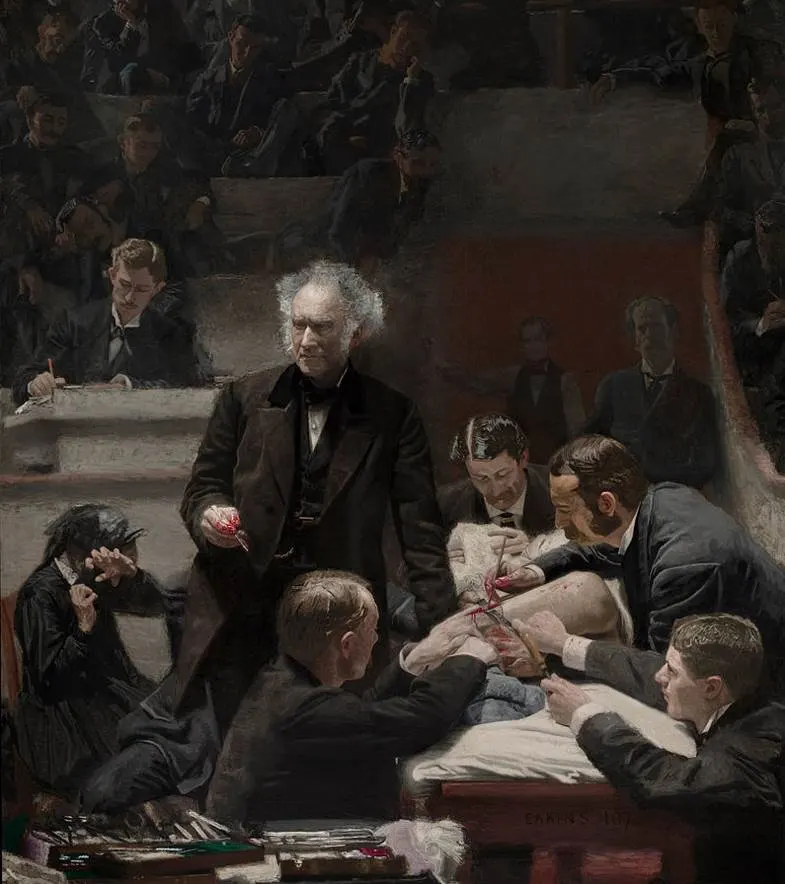
7. Fish Magic – Paul Klee
- Date created: 1925
- Dimensions: 77.2 × 98.4 centimeters (30.4 × 38.7 inches)
Fish Magic is one of the most remarkable works of art in the oeuvre of Paul Klee (1879-1940), a Surrealist artist who was one of the most influential figures in the world of art in the early 20th century. It depicts a mix of aquatic, celestial, and earthly figures using a mix of dark and bright colors.
Klee produced the painting by first producing a multi-colored canvas which he covered with an extremely dark pigment. He subsequently went on to scratch off the dark surface to reveal the colorful elements in the painting. This creates a magical atmosphere.

8. Pietà – El Greco
- Date created: 1571-1576
- Dimensions: 28.9 × 20 centimeters (11.4 × 7.9 inches)
Pietà is a pretty small work of art by the Greek-born Spanish artist Domḗnikos Theotokópoulos (1541-1614), a man better known by his nickname “El Greco.” It’s also referred to as “The Lamentation” and depicts Mary holding the body of her dead son Jesus Christ following his crucifixion.
This was a popular subject in the world of art and it’s clear that the Mannerist artist was influenced by the works of Michelangelo during his time in Italy. The triangular composition looks very similar to that of the Pietà sculpture, an incredible work of art by the Italian artist.
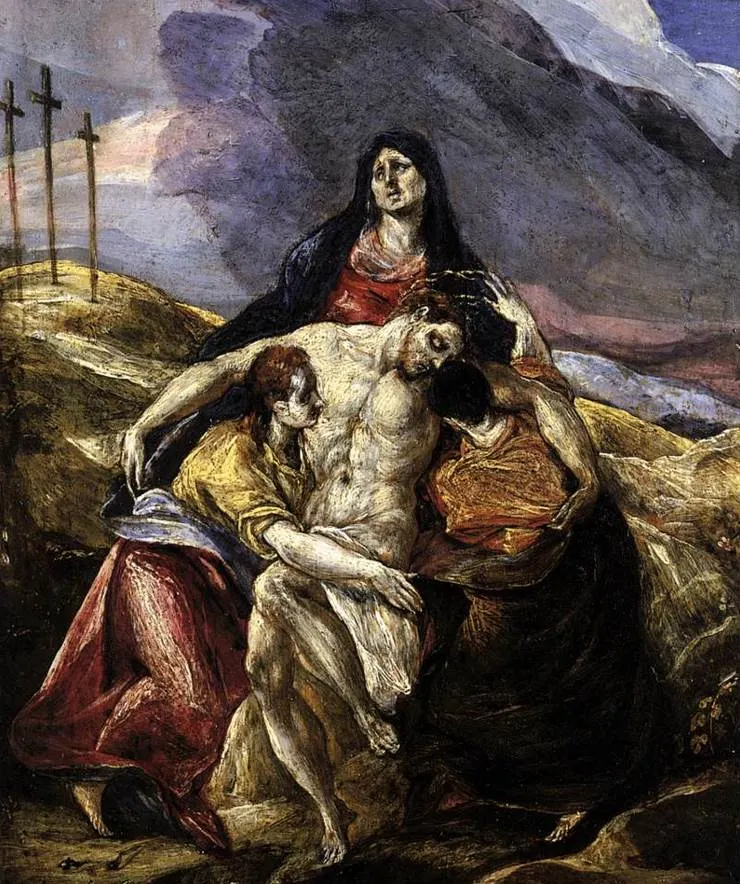
9. At the Moulin Rouge: The Dance – Henri de Toulouse-Lautrec
- Date created: 1890
- Dimensions: 115.6 × 149.9 centimeters (45.51 × 59.02 inches)
At the Moulin Rouge: The Dance was the second version of several paintings by Henri de Toulouse-Lautrec that depict an interior scene at the Moulin Rouge, the popular Parisian cabaret. The artist was a frequent visitor to this famous nightclub in the city. His other famous version is called “At the Moulin Rouge” and is part of the collection of the Art Institute of Chicago.
In the middle of the painting, we can see a couple dancing to a dance referred to as the “can-can.” The man has been identified as Valentin le Désossé, a popular dancer at the Moulin Rouge. A mysterious woman in pink is seen in the foreground and several aristocrats in the background have been identified as well.

10. Three Musicians – Pablo Picasso
- Date created: 1921
- Dimensions: 204.5 x 188.3 centimeters (80.51 x 74.13 inches)
Three Musicians is the title of two oil paintings with a similar subject painted by Pablo Picasso in the early 1920s. The Cubist artist painted them at Fontainebleau near Paris and the work has been described as a prime example of the Cubist style that he helped to develop in the early 20th century.
The painting features 3 figures that are believed to represent a Harlequin, a Pierrot, and a monk. They have been identified as Pablo Picasso (1881-1973) himself and his two friends, the poets Guillaume Apollinaire and Max Jacob. Apollinaire died of the Spanish flu and Jacob joined a monastery in 1921. The other version is part of the collection of the MoMA in New York City.
